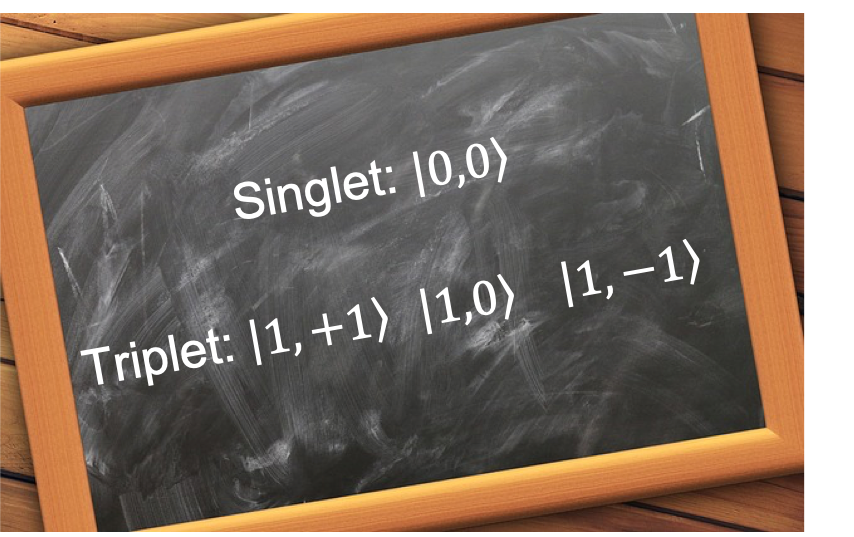The singlet state describes a composite system with a coupled spin eigenstate of , while a triplet state refers to a composite system with coupled spin eigenstates of
,
and
.

Consider a system of two spin- particles (
and
). According to the Clebsch-Gordan series, the allowed angular momenta of the system are
, which implies that the system is characterised by the spin eigenstates
,
,
and
. The basis states forming these four spin eigenstates are given by eq193, with the general spin eigenstate of the system being a linear combination of these basis states (see eq195).
Let’s begin with the determination of the values of the coefficients for the spin eigenstates and
, which must adhere to the condition:
. Letting the operator
act on eq195 and using eq193 and 197,
For the eigenvalue equation to be valid,
, i.e. one possible spin eigenstate when
is
, while the other possible spin eigenstate is
. These two spin eigenstates must correspond to either
or
. To distinguish them, we use eq203 and let the operator act on the two spin eigenstates to give:
Since the two eigenstates are characterised by and
, the expected results are
and
respectively. Therefore, the above equation is valid only if
, such that:
and
Therefore, and
. The spin state
as mentioned earlier is the singlet state, which after normalisation becomes

Question
Show that the normalisation constant is .
Answer
Likewise, the state after normalisation is
We have two more spin eigenstates of the system to consider: and
. Since the allowed values of the total magnetic quantum number
are the sum of the allowed values of the two contributing magnetic quantum numbers (see eq207),
and
., both of which are already normalised because they are basis states.
Therefore, we have:
or in the wave function notation:
The helium atom with the excited state configuration of 1s12s1 is commonly used to illustrate the singlet and triplet states. If the electrons have anti-parallel spins, the excited atom is characterised by the singlet state. If the electrons have parallel spins, the excited helium is in the triplet state.